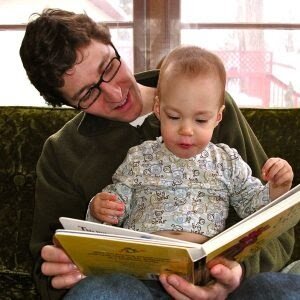How lap time contributes to social-emotional growth
For children, especially very young children, lap-time literacy experiences can offer powerful and usually positive contributions to their social-emotional development. Conversely, the language and informational richness of books don’t benefit a child much unless books are opened, explored, read and discussed with a caregiver.
Such sharing forms a critical basis for positioning books to contribute to a child’s sense of self in the context of the family, their development of concepts about the world beyond their home or neighborhood, and the essential importance of experiencing the myriad differences and complexities discoverable in exploring the daily lives of others.
Let’s be clear on how critical social-emotional development is. Accepting and understanding one’s own emotional responses to life’s complexities and developing a solid sense of self can serve as the platform for understanding the range of possible human relationships. A child who has family, friends and neighbors will receive blessings from each for emotional health. Sometimes, however, those blessings are culturally and geographically narrow, and serve as limitations as children’s lives expand to include diverse social and emotional experiences in school, faith communities and their ever growing personal networks.
What children don’t receive from their upbringing, however, they can receive through books. Books and reading provide safe places to explore the emotional strengths and weaknesses of our complex world. Books can provide children a way to observe how others accept their own emotions, embrace their feelings, and turn them into tools for deeper learning and clearer communication.
Early literacy experiences–interactions with books and explorations about what their authors mean to convey–can contribute exponentially to a child’s sense of comfort with making new friends, understanding other families, and appreciating others’ unique challenges and triumphs.
Every verbal interaction serves to strengthen and enrich a child’s command of his language. However, the irreplaceable impact of books and other forms of written communication serve as a means for capturing sophisticated and subtle language in a physical, enduring form, allowing on-demand review, rereading and use of complex sentence structure become effortless and natural for children. I contend, therefore, that absolutely nothing can replace the depth and breadth of language and educational contributions of good books and literacy experiences when they are shared and comfortably discussed with children, toddlers and infants.
All of this starts with little ones sitting in the lap of a loved one, reading terrific books and enjoying loving exploration of how a child can see herself in each one.

